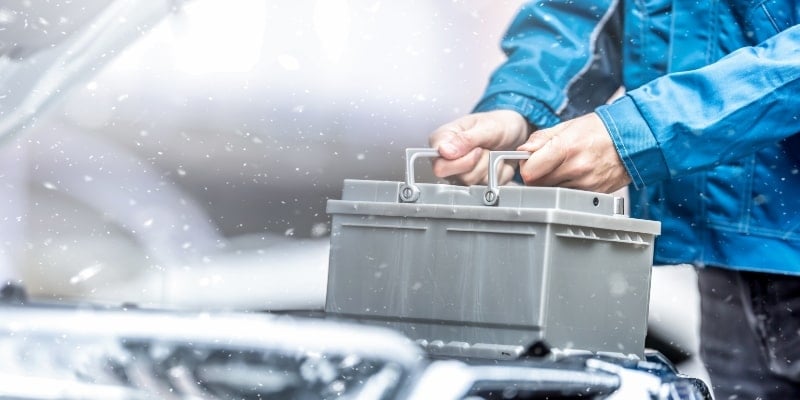-
Shopping Tools
-
Care & Maintenance
-
About
-
Dealer Login

Cold snaps don’t have to kill your range—keep batteries fully charged, stored indoors or insulated, and maintained to stop freezing and protect performance.
Protecting golf cart batteries in winter is mostly about state of charge and storage conditions. A fully charged flooded lead-acid battery has a very low freezing point, while a discharged one can freeze and sustain permanent plate damage. With a few preventative steps—regular top-offs, smart storage, and simple inspections—you can keep your cart ready for spring. Whether you manage one vehicle or a small fleet of golf carts, the guidelines below will help you avoid costly cold-weather failures.
Freezing risk depends on state of charge (SOC) because electrolyte concentration changes as batteries discharge:
The takeaway: charge is protection. The colder it gets, the more important it is to keep batteries at or near full.
Can AGM or lithium batteries freeze?
AGM are more resistant to leakage and stratification but can still be damaged if left discharged in extreme cold. Lithium chemistries should not be charged below their specified temperature threshold; many packs include low-temp charge protection. Always follow the manufacturer’s limits.
Should I disconnect the pack for storage?
If the cart will sit for months without a maintainer, disconnecting the main negative reduces parasitic draw. Reconnect and charge to full before the first use.
Freezing damage is avoidable. Keep batteries fully charged, minimize parasitic loads, store in a protected space, and maintain electrolyte correctly. A simple winter routine—maintainer on, monthly checks, and smart storage—preserves capacity, avoids cracked cases, and ensures your cart wakes up ready when warmer weather returns.
